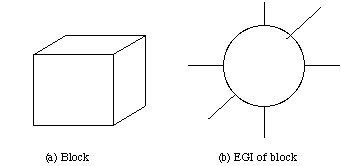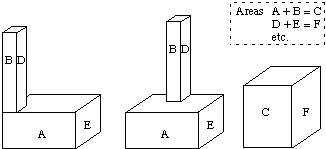


Next: Geometric Modelling for Computer
Up: Object Recognition
Previous: Invariants
- Surface normal vector information for any object can be
mapped onto a unit sphere, called the Gaussian sphere.
- Mapping is called the Gaussian image of the object.
- The mapping is: Surface normals for each point of the object are
placed so that their
- tails lie at the centre of the Gaussian sphere
- heads lie on a point on the sphere appropriate to the particular
surface orientation.
We can extend this process so that
- a weight is assigned to each point on
the Gaussian sphere equal to the area of the surface having the given normal
- This mapping is
called the extended Gaussian image (EGI).
- Weights are represented
by vectors parallel to the surface normals, with length equal to the weight.
An
example of such an extended Gaussian image is shown in
Fig. 44.

Fig. 44 The EGI of a block
Using three-dimensional solid models of objects (see
next section),
- The corresponding EGIs for each stored object
model can be computed and saved in the model database
- Model stored as a surface
normal vector histogram.
- Surface normals easily extracted from Image (plane fitting)
- Once a
match is found (by comparing EGI histograms) both the identity and orientation
of the object may be calculated.
Disadvantages:
- EGIs only uniquely define convex objects.
- An infinite number of non-convex objects can possess the same EGI.

Fig. 45 Examples of objects with the same EGI
 David Marshall 1994-1997
David Marshall 1994-1997

